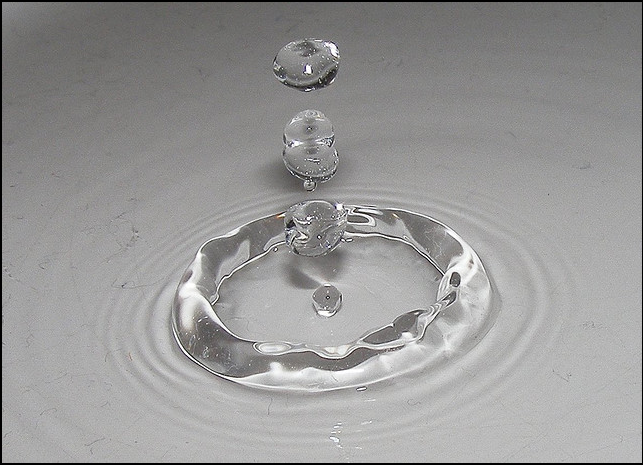 Image Source: Flickr – Chris Isherwood
Image Source: Flickr – Chris Isherwood
This is one of the handiest and easily applied metrics in our analytics toolbelt. Simply put, it measures when a website user hits a web page and then “bounces off”. In other words, the user leaves without viewing any other pages on the website.
When a user “bounces” it means he/she doesn’t feel prompted enough to click any links on that page. Not a thing. Ouch.
Here’s Google’s technical definition:
Bounce Rate is the percentage of single-page sessions (i.e. sessions in which the person left your site from the entrance page without interacting with the page).
The surprising thing is that quite a few beautifully looking websites can have astonishingly high Bounce Rates. This can be due to a host of factors. Are you starting to see a common pattern here with analytics? We can easily see what happened but getting to the why is always more work.
Why is my Bounce Rate so high?
Here’s a few reasons your Bounce Rate could be “off the charts”:
- The design of the site is poor. At a glance it may look acceptable but when a user tries to accomplish something he or she might find that there is way too much noise on the page. Common ailments include poor or verbose copy, issues with font type and size, weak images and inserting way too many calls to action. Remember, simplicity wins online. Look at the Google homepage – there’s a reason it’s stayed the same for so many years.
- Sloppy site architecture. If the site was built without a clear focus of helping the user accomplish a specific goal, the site navigation quickly reveals it. Fuzzy headings tend to confuse visitors and if we ask people to stop and figure out something they tend to vanish. Like we discussed in the Strategy section, a good rule of thumb is five to seven main headings with clear clues on what that section holds. For example, a tourist site that has “Explore Our Area” is too vague. Something like “Plan a Trip” can help lower a bounce rate by making the first step of digging into the site appear easy and approachable.
- Referring traffic sources. The Bounce Rate is one of the most effective tools for measuring traffic quality. Assuming you’ve solved the problems listed above, the next step of investigation is to slice your data against where the visitors are coming from. You might find that people coming from social media tend to bounce at a much higher rate versus visitors coming from organic search or press sites. This can be particularly handy for measuring PR efforts. Big media hits can look sexy to the “powers that be” but often times a passionate niche blogger will send much better traffic as evidenced by lower Bounce Rates.
- Blog Traffic. This site (OnDigitalMarketing.com) is set up primarily as a blog). As a result, the site can pull in quite a range of Long Tail traffic – mainly, users who are looking for a very specific “something”. As a result, they might Google a keyword phrase like “what is SEO?”, read the short post on the topic, and then bounce off. Many blogs combat this with a nurturing effort. Bloggers get users to come back to the site by using email marketing opt-ins (the overlay that shows up when you hit the site for the first time). This allows the blogger to reach out and interact with the user at a later date. Once the user returns to the site, he or she is recorded as a Repeat Visitor.
What’s a reasonable Bounce Rate?
This varies tremendously across industries referring traffic sources. However, a good rule of thumb is to shoot for under 50%. Some of the best sites can hover around 30%, which is doing pretty well – since seven out of ten visitors are digging into the site beyond one click.
When the bounce rate is low, it means our SEO efforts are pulling in the right kind of traffic. No matter how users are entering our site, whether from Googling a keyword phrase, clicking a social media link or a link from another website, if our bounce rate is low we know that we are giving them what they expect to see .
Landing page bounce rates from paid advertising are another beast. (A landing page is the first page you “land on” when you click over from something like a paid search ad or a link.) These tend to have higher bounce rates that can range quite widely from 50% – 100%. Depending on metrics like Cost per Acquisition (CPA) or conversion goals, it can make sense to tolerate such a high bounce rate. However, through ongoing testing we should always try and lower this metric. We’ll talk more about methods like A/B split testing and how to fine-tune online campaigns in the Adaptation phase.
Another thing to consider is the goal of the site. If the landing page is the front end of a portal (like Google’s homepage) than a high Bounce Rate is actually what you want, otherwise you’re confusing users as they try and use the tool to accomplish their task. Google’s goal is to give users exactly what they’re searching for as quickly as possible. In this case, a high Bounce Rate would be ideal because the user has moved onto the search results that Google has served up in response to the search.
Another factor that can influence Bounce Rate is a variable like a long scrolling page design – similar to what sites like Pinterest use. Users may be clicking through and scrolling but often times they are not requesting a unique URL, which means the analytics package fails to capture this interaction. Remember, Google Analytics defines bounce rate as the percentage of single-page sessions. This means that a user could scroll through Pinterest all evening and if he/she doesn’t click another link, the visit still counts towards the Bounce Rate. There are some workarounds for this but might take a bit of developer help to drop in some custom triggers in the code using JavaScript.
